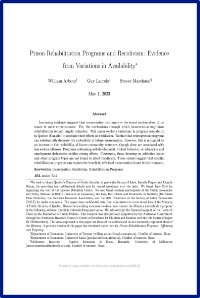By Access Living of Metropolitan Chicago
According to statistics gathered from the 2011-2012 National Inmate Survey administered by the U.S. Department of Justice’s Bureau of Justice Statistics, an estimated 40 percent of individuals in jail self-reported having at least one disability. 3 Navigating jail with a disability can be complex, overwhelming, and costly. The impact of jailing a person with a disability also impacts their families and communities. The incarceration of one is essentially the incarceration of many. In the United States, the use of jail to confine people with disabilities is closely aligned with efforts to place disabled people in asylums and institutions, similar to the criminalization of black people resulting in mass incarceration following the abolition of slavery. From the end of slavery to today, laws have been enacted to criminalize and devalue both people of color and disabled individuals. These laws further socially justify these populations’ incarceration and further fuel biases and fear towards these groups. 4 Efforts to reduce jail incarceration nationwide have resulted in a range of innovative strategies, such as reducing the use of cash bail5 and the way that prosecutors make decisions about charges. 6 There is certainly a serious effort to shift how jails engage with people who need mental health supports, notably at Cook County Jail. 7 However, despite the general prevalence of disability in jails, there remain a range of under-addressed opportunities to discuss how to further reduce the jail incarceration of people with disabilities overall. A number of disability advocates have been working for many years to bring what is essentially a cross-disability look to criminal justice and restorative justice work; we need to hear and build on these efforts. Moreover, even as the National Inmate Survey showed high rates of self-reported disability status, it also showed that incarcerated people of color tended to underreport disability status.8 This poses a complex challenge to understanding the disability experience in different demographics who are impacted by police contact and jail incarceration. We feel this dynamic is of great note given current national work on reducing racial disparities in arrest trends and jail populations. This is especially important for Access Living, as the majority of people we serve directly are from black and brown neighborhoods in Chicago.
Chicago: Access Living, 2019. 71p.





















